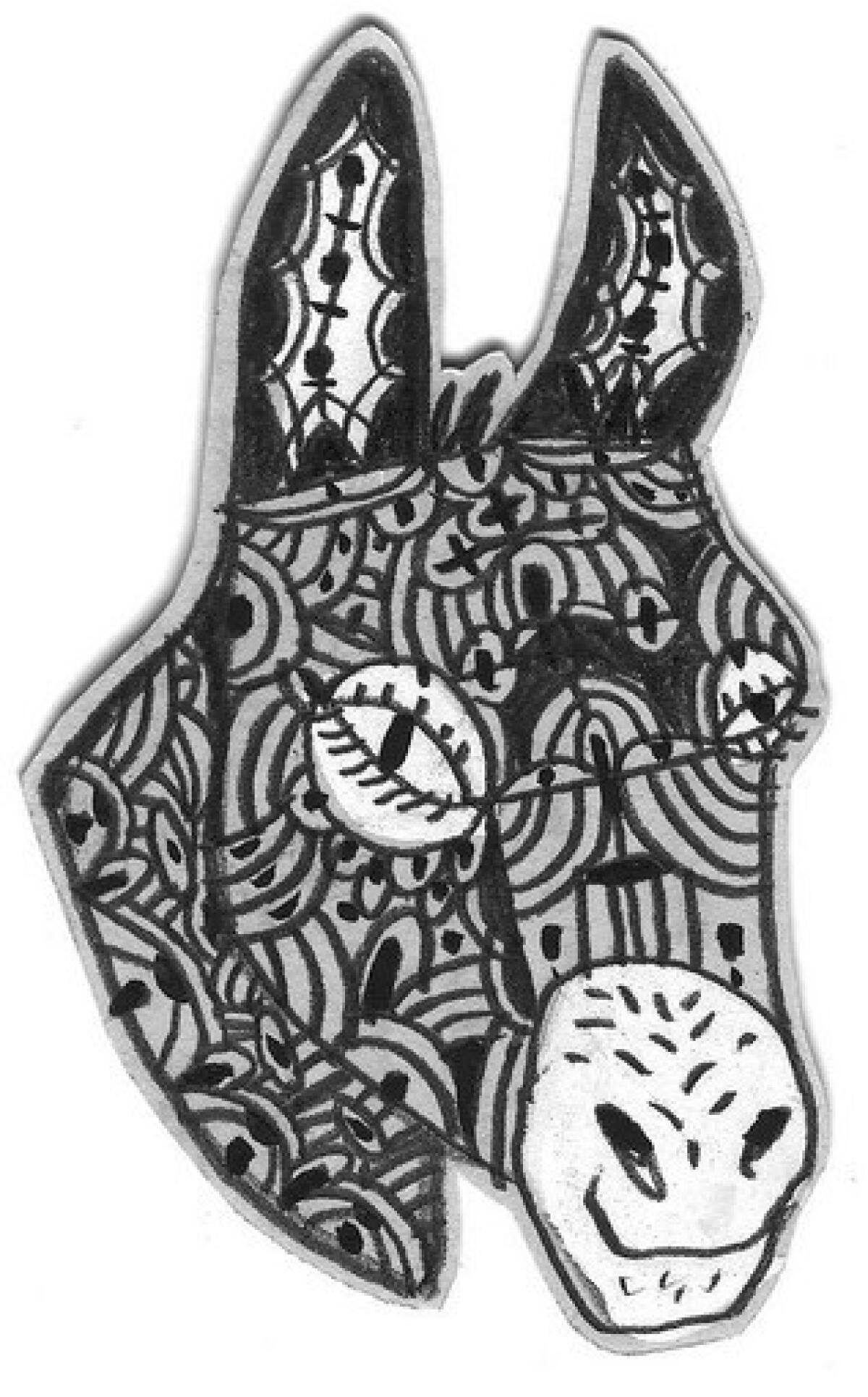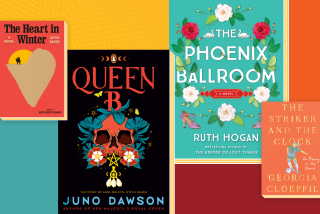‘Beatrice and Virgil: A Novel’ by Yann Martel

Beatrice and Virgil
A Novel
Yann Martel
Spiegel & Grau: 218 pp., $24
When I was little, maybe 6 or 7, my mother read a book that pushed her over the edge. She literally rose from the book and ran into the lobby of the hotel in which we were staying, naked. The book was “Atlas Shrugged” by Ayn Rand.
It seems to me that this sort of thing is becoming less and less common. Not that it’s a good thing; not that people should be so moved by books that they go crazy, no. But it is awe-inspiring when a writer hits a high note; goes dancing along the edge of something; hurls himself against enormous questions again and again. Brain cells expand. Blood is shed. Of course, it is nothing like real blood, but readers and writers can be broken down and reconstructed, of this I am certain.
“Beatrice and Virgil” is Yann Martel’s third novel. The first was “Self” (1996) about a man who wakes on his 18th birthday to find that he is a woman. The critics didn’t like it much, and Martel has made it quite clear that unlike many writers who, for some very good reasons and some bad, breezily dismiss the opinions of critics, he takes criticism of his work very seriously. His second novel, “Life of Pi” (2001), the story of a boy who is shipwrecked with a Bengal tiger, won many prizes and much critical acclaim.
In the author’s note in “Life of Pi,” the author is dejected after the failure of his first novel. He is searching for a new story. In the beginning of “Beatrice and Virgil,” Martel’s protagonist is pleased that his second novel has done well: “Henry had written a novel because there was a hole in him that needed filling, a question that needed answering, a patch of canvas that needed painting. . . . Then complete strangers told him that his book had filled a hole in them, had answered a question, had brought colour to their lives.”
Henry is in the throes of writer’s block. He has worked for half a decade on a book about the Holocaust, a flip book in which the nonfiction story appears on one side and the fiction on the other. His editor, publisher, agent and marketing people tell him it will be a failure. He stops writing. It occurs to him that silence is the intended outcome of the juggernaut. He decides to make up for his failure by becoming a good father to his son: “[H]is son would become his pen and by force of being a good, loving father he would write a beautiful life story with him.”
But no. Life draws Henry into another story, just as the writer in “Life of Pi” is drawn into Pi Patel’s story. This layering of fiction and nonfiction requires peeling on the part of the reader. It is a continental trick, an ancient understanding of the power of stories to reveal and obfuscate -- the play within the play. The author is little more than a vessel, a reedy pipe through which the story blows.
And so it unfolds, slowly at first, like a Hitchcock film, picking up speed. Henry receives a letter. In it, a copy of a story by Gustave Flaubert: “The Legend of Saint Julian Hospitator.” It is the story of a boy who enjoys killing animals. The sender includes a piece of a play featuring two characters, Beatrice and Virgil, discussing the virtues of pears. There is also a note, which says, “I need your help.” Several weeks after receiving the letter, Henry finds himself at the return address, a shop in a corner of the city called Okapi Taxidermy. He meets the writer, a gaunt, humorless taxidermist (also named Henry) who needs Henry’s help with his play. Henry is intrigued. He likes the shop, full of animals, “a stage full of stories,” “a room full of adjectives, like a Victorian novel.”
Henry meets Beatrice and Virgil, a stuffed donkey and a stuffed howler monkey. The taxidermist resents the word “stuffed.” “What I am actually doing is extracting and refining memory from death. . . . Every animal I have mounted has been an interpretation of the past. . . . The worst enemy of taxidermy,” he explains to Henry, “and also of animals, is indifference. The indifference of the many, combined with the active hatred of the few, has sealed the fate of animals.”
It does not take Henry long to realize that the taxidermist’s play is an allegory about the Holocaust. There are clues: In the play, Virgil is extremely anxious. Why? “Because he’s a howler monkey in a world that doesn’t want howler monkeys,” the taxidermist explains. His only solace is his relationship with Beatrice. Virgil and Beatrice live in a country called The Shirt. Together, they remember “The Horrors.” They make a “Sewing Kit List,” what the taxidermist calls “his greatest literary achievement.” It is a list of pieces of lives: words, noises, events, gestures and an address.
Henry recognizes the address. He believes for one shining moment that fate has brought him into contact with a writer “who was doing exactly what Henry had argued should be done in his rejected book three years earlier: represent the Holocaust differently so that its terrible spirit might not be forgotten.” Henry’s experience with the taxidermist has drawn him from his shell of cleverness -- from the clever writer with the flip-book idea to the writer who makes his readers understand what it felt like to be alive in the eye of the Holocaust. He writes a work of fiction: 13 games. Here is an example of one game: “Your daughter is clearly dead. If you step on her head, you can reach higher, where the air is better. Do you step on your daughter’s head?”
Writers such as Martel are a kind of human sacrifice. It cannot be easy to imagine a way into suffering, come out, lead others into and through it.
Henry wrote his second novel because there was “a hole in him that needed filling, a question that needed answering.” Martel tricks us to the edge of the abyss, which is cruelty. And leaves us there with the “Sewing Kit List.”
Salter Reynolds is a writer in Los Angeles.
More to Read
The biggest entertainment stories
Get our big stories about Hollywood, film, television, music, arts, culture and more right in your inbox as soon as they publish.
You may occasionally receive promotional content from the Los Angeles Times.










